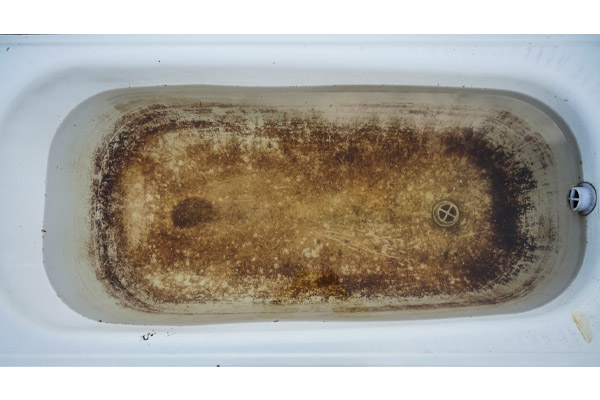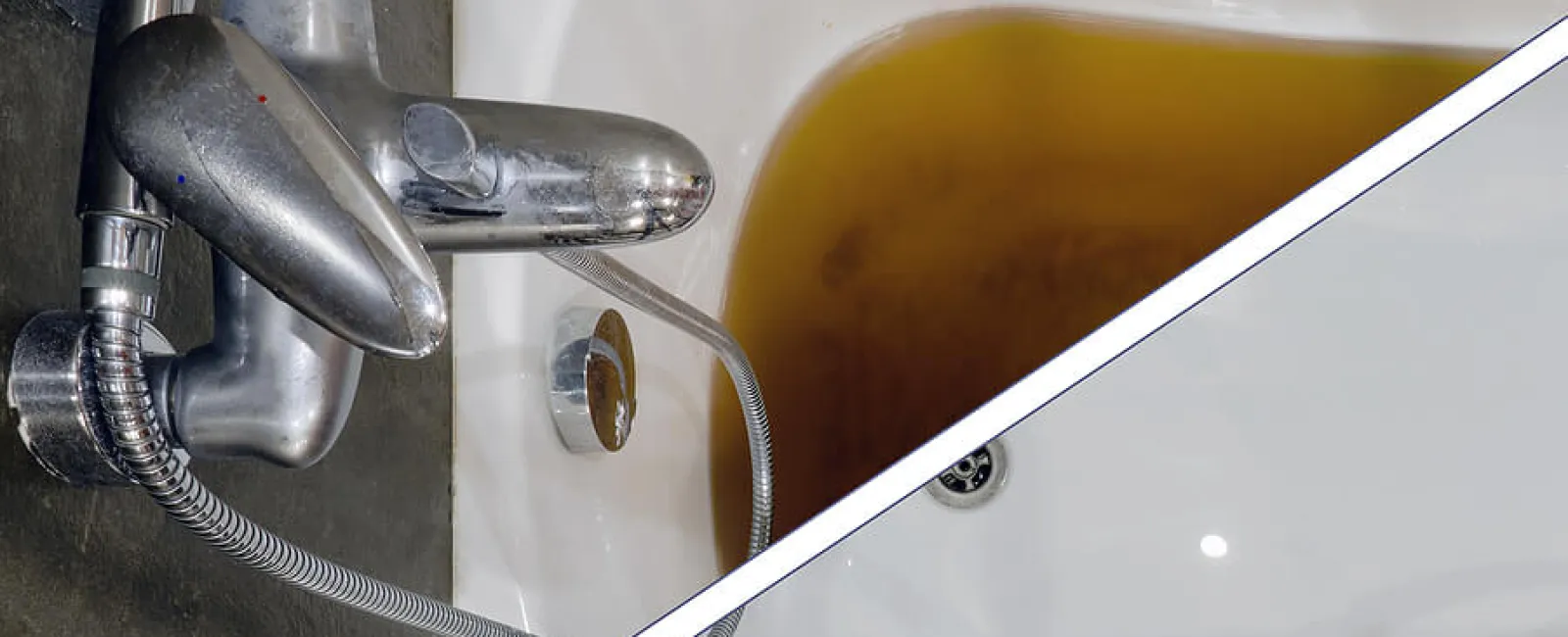Important Explanations for Effluent in the Bathtub
Important Explanations for Effluent in the Bathtub
Blog Article
Any individual has their unique perception when it comes to What To Do If Sewage Starts Backing Up Into the Shower.

Sewage back-up in the bathtub can be a distressing and unsanitary problem for any house owner. Not just is it inconvenient, but it additionally postures severe wellness dangers and shows underlying issues with the plumbing system. Understanding why sewage is showing up through the bathtub is crucial for taking suitable action to deal with the problem effectively.
Introduction to the Concern
Recognizing the Issue
When sewage draws back up into the bath tub, it's a clear indicator of a problem with the drainage system. The wastewater that needs to be moving far from your home is instead finding its back right into your space, which can lead to considerable damage and health hazards.
Prospective Reasons
Several elements can add to sewage backup in the bath tub. From obstructions in the sewer line to concerns with the plumbing framework, determining the root cause is vital for discovering a service.
Typical Reasons for Sewage Backup
Clogs in the Sewage System Line
Among one of the most common root causes of sewage back-up is an obstruction in the sewer line. This can occur because of the build-up of debris, grease, or foreign objects in the pipelines, stopping proper circulation and triggering sewer to back up right into your tub.
Tree Origin Invasion
Tree roots seeking moisture and nutrients can penetrate sewer lines through little fractures or joints. With time, these origins can expand and expand, triggering significant damage to the pipes and leading to sewage back-up concerns.
Aging Infrastructure
Older homes might have outdated plumbing systems that are a lot more prone to rust, splits, and damage. As pipes age, they come to be much more vulnerable to leaks and blockages, raising the probability of sewage backup incidents.
Heavy Rainfall or Flooding
Throughout periods of heavy rainfall or flooding, the drain system might come to be overloaded with excess water, triggering backups and overflows. This can result in sewage supporting right into bath tubs and other fixtures inside the home.
Health Threats Associated with Sewage Back-up
Contamination of Supply Of Water
Sewage backup can infect the water supply in your home, positioning a severe health threat to you and your family. Exposure to infected water can cause intestinal issues, skin infections, and other health problems.
Spread of Illness
Sewage includes damaging bacteria, infections, and parasites that can trigger a series of diseases, including hepatitis, cholera, and gastroenteritis. Coming into contact with sewage or polluted surface areas puts you in danger of infection.
Mold and mildew Development
Moisture from sewer back-up can produce suitable conditions for mold and mildew development in your home. Mold spores can worsen breathing troubles and trigger allergies in delicate individuals, making timely clean-up vital.
Signs of Sewage Back-up
Foul Odors
Undesirable smells originating from drains pipes or components, particularly in the bathroom, might show sewer back-up problems. These smells are frequently solid and relentless, signifying a problem that requires immediate interest.
Slow Draining Fixtures
Tubs, sinks, and toilets that drain gradually or not in any way could be experiencing sewer back-up. If numerous fixtures are influenced all at once, it's most likely that the concern originates from a common factor, such as the primary drain line.
Gurgling Noises
Weird gurgling or bubbling noises coming from drains pipes when water is running in other places in your home are indicative of air entraped in the plumbing system. This air accumulation can arise from sewage backup and need to be checked out quickly.
Immediate Actions to Take
Turning Off Supply Of Water
In case of sewer back-up, it's vital to turn off the water system to avoid more contamination and damage. Find the main water shutoff valve in your home and shut it off until the issue can be resolved.
Getting In Touch With a Specialist Plumber
Handling sewage backup is not a do it yourself job. Contact a licensed plumber with experience in handling sewage-related problems to assess the scenario and carry out necessary fixings or clean-ups.
Staying Clear Of Contact with Contaminated Water
Until the sewage backup is dealt with, avoid contact with polluted water to stop the spread of microorganisms and pathogens. Put on safety gear if you have to remain in the afflicted area and clean your hands thoroughly afterward.
Preventive Measures
Normal Upkeep of Sewage System Lines
Schedule routine assessments and maintenance of your drain lines to determine and attend to possible concerns prior to they intensify into significant troubles. This can include cleaning out particles, evaluating for tree origin invasion, and fixing any kind of damaged pipelines.
Installing Backwater Shutoffs
Think about installing backwater valves in your plumbing system to avoid sewer from flowing back into your home throughout periods of heavy rainfall or flooding. These shutoffs immediately close when water draws back up, shielding your building from contamination.
Correct Disposal of Household Waste
Avoid purging anything apart from toilet tissue and human waste down the bathroom to avoid blockages and obstructions in the sewer line. Dispose of oil, oil, and other house chemicals effectively to minimize the danger of plumbing troubles.
Cleaning Up After Sewer Back-up
Disinfection Procedures
Completely disinfect and disinfect impacted locations after sewer backup to remove hazardous bacteria and protect against mold growth. Usage appropriate cleaning products and protective gear to make sure safe and effective clean-up.
Reconstruction of Influenced Areas
Repair any type of damages to flooring, wall surfaces, or fixtures caused by sewer back-up. Depending upon the degree of the damages, you may require to change carpeting, drywall, or various other materials to restore your home to its pre-loss problem.
Why Is Water Backing Up in My Bathtub When I Flush My Toilet?
What to do about a sewer line clog
First, don’t bother with plunging. No amount of plunging will dislodge the clog in a sewer line. The clog is too far away. Plungers are for clogs in the toilet itself, not the sewer line. Plus, the most likely causes of a sewer clog are:
Tree roots Flushed toys or feminine products Grease buildup Those items don’t move easily. And in the case of tree roots, the roots need to be cut out of the pipe and the pipe will need to be repaired.
You’ll need a closet auger. A closet auger is a type of plumber’s snake with a protective cover to keep from scratching the delicate porcelain toilet. If the clog is further down, you may need to remove the toilet or use one of your cleanouts to get to the clog.
We also recommend doing a video inspection of the drain to ensure that the cause of the clog has been completely removed. Otherwise, you could have the same problem again in a few days or weeks.
https://mspplumbingheatingair.com/blog/why-is-water-backing-up-in-my-bathtub-when-i-flush-my-toilet

I am very enthusiastic about and I really hope you appreciated the blog posting. If you enjoyed our post if you please be sure to share it. We enjoy your readership.
About
Report this page